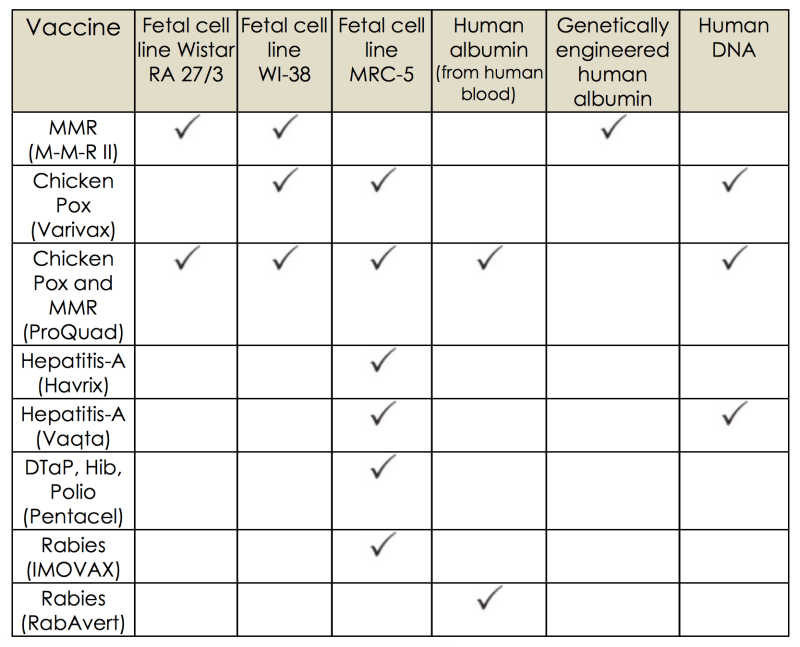Vaccines

We believe all human life is sacred and of inestimable worth in all its dimensions, including pre-born babies, the aged, those with disabilities, and every other stage or condition from fertilization to natural death.
PARENTAL GUIDANCE IS SUGGESTED: Dr. Jim Meehan delivers the sobering truth about the use of aborted fetal cell lines in the vaccine making process, as legislators across the country seek to eliminate religious exemptions from vaccination.
Mandates for Immunizations for Children to Attend School
On April 17, 2023, the Southern District Court in Gulfport ruled that the Mississippi Department of Health must offer a religious exemption to immunizations required for school entry. The judge ruled that not accepting religious exemptions to school vaccines violates our First Amendment right of the US Constitution. The court gave the state until July 15, 2023, to develop a process for offering the religious exemption. On July 14, the religious exemption process was posted on the MSDH website and parents could begin the process of applying
Prior to July 14, Mississippi was one of only six states that did not have a religious exemption for students to attend school. Some parents have sincerely held religious beliefs that do not permit them to vaccinate their children, including objections to the use of aborted fetal tissues in the research and production of some vaccine products. Pro-Life Mississippi supports a religious exemption and celebrates this victory for families in our state.
Supported by the Informed Action Consent Network (ICAN) and Mississippi Patriots for Vaccine Rights (MPVR), attorneys filed on behalf of six Mississippi families. According to a statement by ICAN: “Those parents were put in an impossible position as they were forced to violate their sincere religious beliefs if they wanted to send their children to school…. ICAN could not be more proud to support this lawsuit that secured this incredible win for freedom!”
All 50 states require vaccinations for children entering public and private schools even though no mandatory federal vaccination laws exist. All 50 states issue medical exemptions, 45 states (excluding MN, WV, CA, ME, and NY) permit religious exemptions, and 16 states allow an exemption for personal or philosophical reasons. To attend a public or private school in Mississippi, students must comply with Mississippi’s childhood immunization requirements or obtain a medical or religious exemption.
The Centers for Disease Control (CDC) recommends getting 29 doses of 9 vaccines (plus the yearly flu and covid-19 shot after six months old) for kids aged 0 to six. No US federal laws mandate vaccination, but all 50 states require certain vaccinations for children entering public schools.
Did You Know?
Vaccines Are Made From Abortions | CDC Vaccine Ingredients
Which vaccines contain human protein and DNA?
The information in this table is drawn from vaccine package inserts downloaded from the FDA website. The Vaccine Ingredients Calculator, following the lead of the package inserts, treats each source of human protein and DNA as a distinct ingredient.
Where did the human protein and DNA come from?
There are three main sources of human protein in vaccines: (1) fetal cell lines, (2) human albumin derived from human blood and (3) human albumin genetically engineered from yeast. The human DNA in vaccines comes from the MRC-5 fetal cell line (see below).


Human Protein from Fetal Cell Lines
- The MRC-5 cell line was developed in September 1966 from lung tissue taken from a 14 week fetus aborted for psychiatric reasons from a 27 year old physically healthy woman.
- The WI-38 human diploid cell line was derived by L. Hayflick from normal embryonic (3-month gestation) lung tissue of a female.
- The rubella vaccine currently used in the United States and in most countries was developed after an American researcher at the Wistar Institute cultured rubella virus from a fetus aborted because the mother was infected with rubella. This vaccine is called RA 27/3 because the rubella virus was isolated from the 27th aborted fetus sent to the Wistar Institute in the 1964 rubella outbreak.
- This article, while incomplete regarding the sources of human protein/DNA and the vaccine in which they are found, attempts to explain why some vaccines are grown in cell cultures that were originally obtained from human fetuses.
A CBS News Investigates article quotes a former senior scientist at a pharmaceutical firm who claims that human tissue is currently used in 23 vaccines; however, we adhere strictly to the vaccine package inserts from the FDA as our ingredient data source and cannot confirm nor deny this claim.
“Due to dwindling capacity for existing aborted fetal cell lines to self-replicate, scientists in China have developed a new aborted fetal cell line, WALVAX 2 that will be used for viral vaccine production. The existing cell lines, MRC-5 and WI-38 are currently used in MMR, Varicella, Hepatitis-A, Shingles, some rabies and some polio vaccines.” -Children of God for Life



